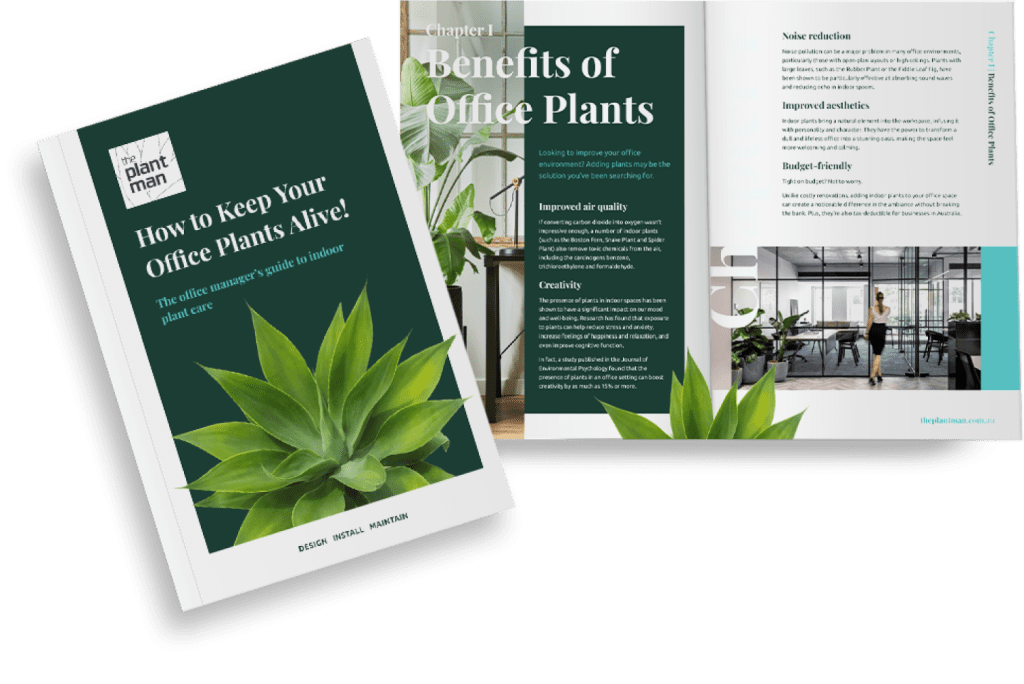Indoor plants are not just decorative; they play a significant role in maintaining the balance of indoor air quality.
So, do indoor plants increase humidity? Or do plants reduce humidity instead?
In this article, we’ll delve into the reasons why plants influence humidity as well as some of the best indoor plants to reduce humidity, so you can select the most effective greenery to enhance your indoor climate control strategy. Whether you’re dealing with high humidity that’s contributing to discomfort and potential health issues, or you’re simply looking to optimise your workspace for ultimate comfort, this guide will help you understand how to leverage the natural benefits of plants.
Do Plants Reduce Humidity?
Plants influence humidity through a process called transpiration. During transpiration, water is drawn up from the roots and eventually evaporates from pores in the leaves called stomata. This not only helps the plant with nutrient uptake and cooling but also contributes to the humidity levels of its surrounding environment. When a plant transpires, it releases water vapour into the air, which can increase humidity.
However, plants can also help to reduce excess humidity by absorbing water through their leaves in a process known as foliar absorption, especially when the soil they are in is already saturated. Some plants are particularly adept at absorption.
The ability to both add and remove moisture helps to moderate the humidity in an indoor setting, contributing to a much more balanced indoor climate.
Related Article: A guide to air purifying indoor plants
What Are The Best Indoor Plants to Reduce Humidity?
Looking to dehumidify your workspace naturally? Here are four of the best plants that absorb humidity, actively creating a more comfortable indoor space.
Bamboo Palm
The Bamboo Palm is not only a tropical aesthetic addition to your office space but also a champion in absorbing excess moisture. This low-maintenance plant thrives in indoor settings and adds to the ambiance with its lush greenery.
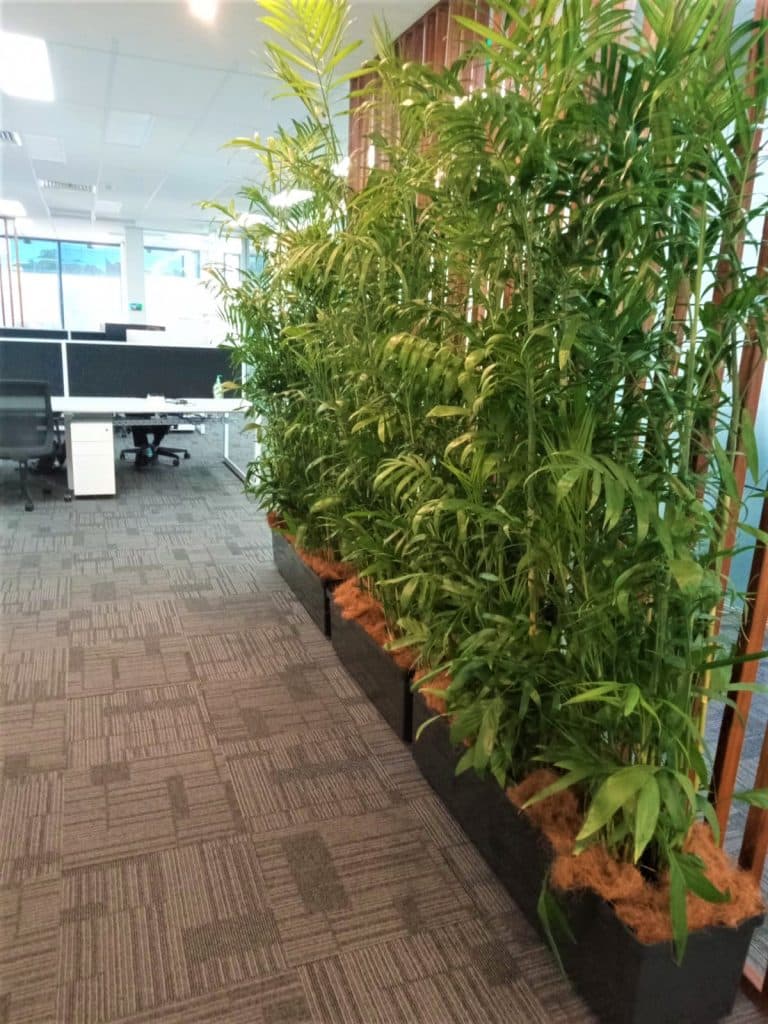
Peace Lily
The Peace Lily is an elegant plant with the added benefit of requiring minimal care. It’s known for its ability to absorb atmospheric moisture, contributing to reduced humidity levels indoors.
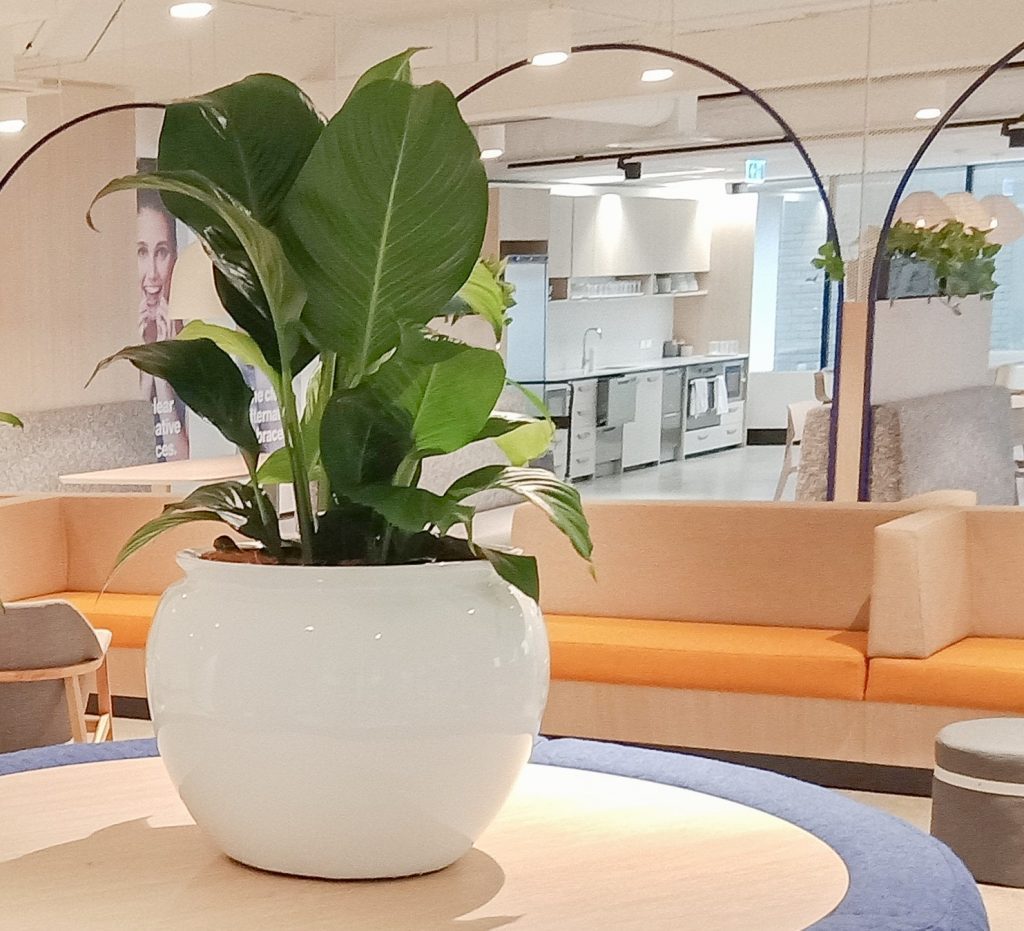
Snake Plant
A Snake Plant is an excellent choice for those looking for a hardy, low-maintenance option. It can absorb moisture effectively and is a popular choice for improving indoor air quality.
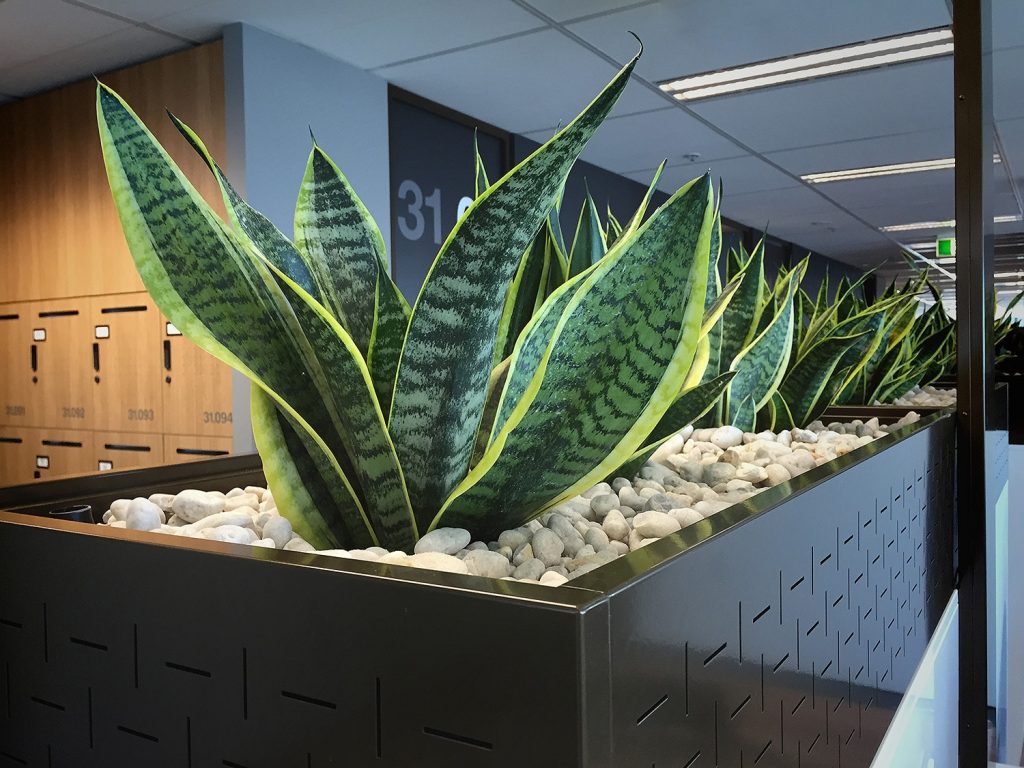
Spider Plant
The striking Spider Plant is known for its resilience and its ability to prosper in a variety of indoor conditions. As one of the best indoor plants that absorb humidity, the spider plant is a great option for moisture management.
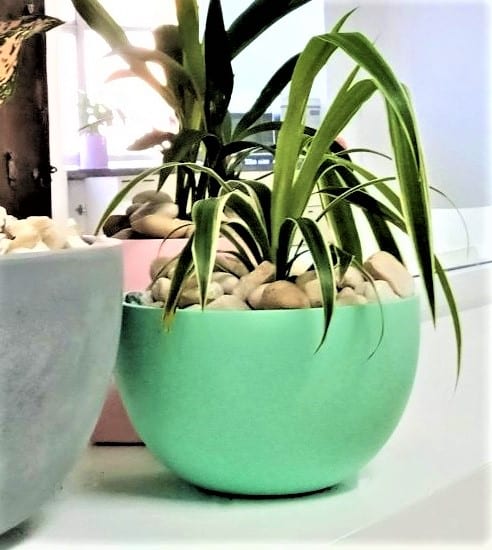
How Else Can Plants Reduce Humidity?
While individual plants that absorb humidity are great, there are other, more creative ways you can introduce plants into your space to reduce humidity. Integrating plant walls and vertical gardens, in particular, can be more robust measures for managing indoor humidity levels.
Plant Walls
Plant walls, or living walls, are not only visually stunning but also a functional solution to humidity control. They cover a larger surface area and hence, and have a significant impact on the air quality of a space.
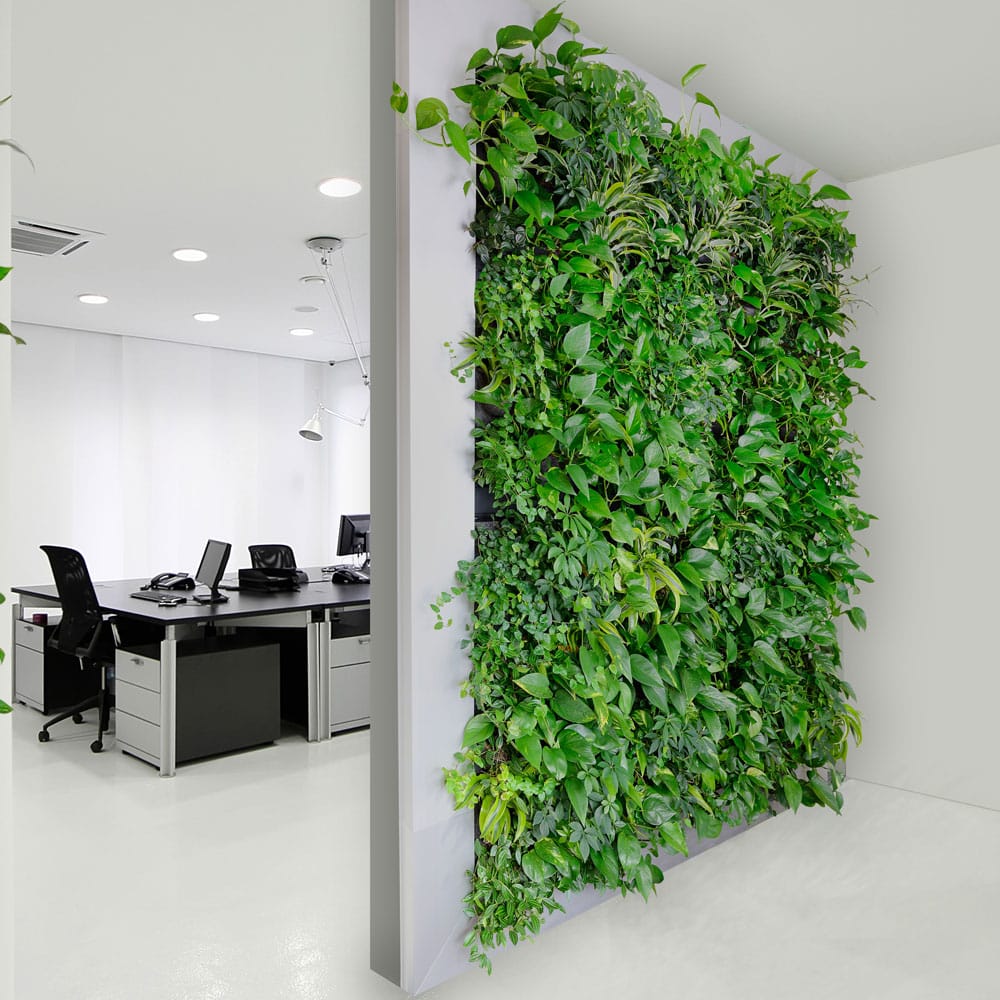
Vertical Gardens
Vertical gardens are a creative way to include greenery in your space while also helping to regulate humidity. These structured installations can transform any wall into a lush, visually-striking and moisture-absorbing feature.
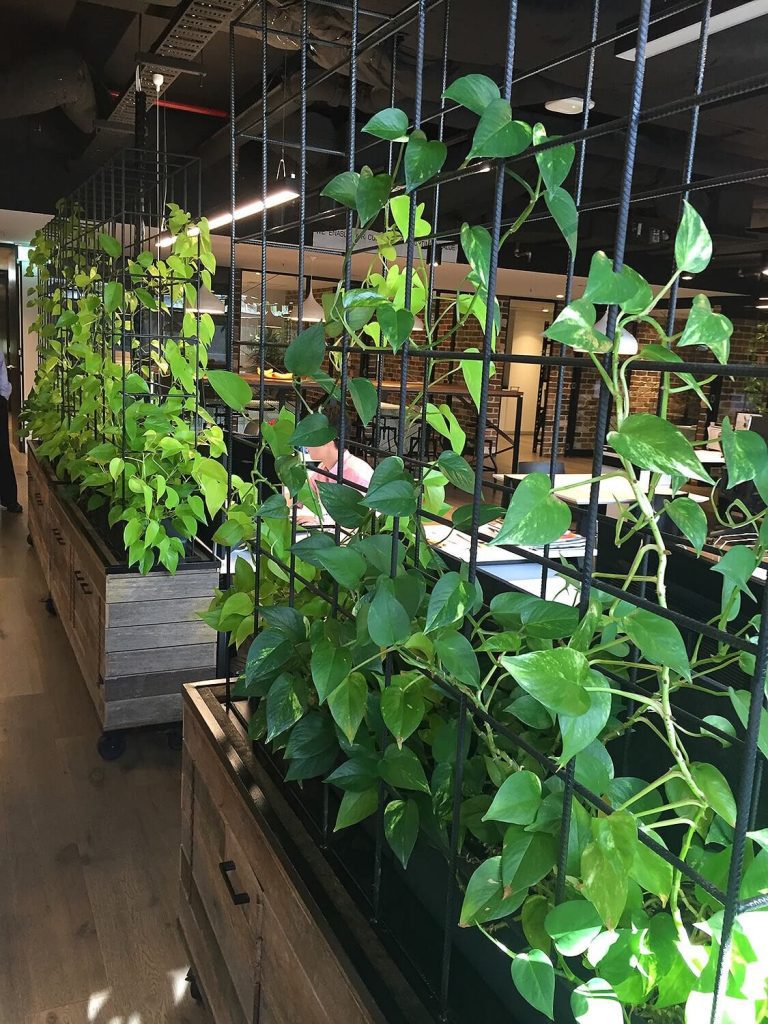
Feeling inspired to greenify your workspace and enhance your indoor climate through the best plants that absorb humidity? Reach out to us for indoor plant hire, maintenance and personalised design advice. Get started on making your indoor office space healthier and more vibrant today!
